Refine search
Actions for selected content:
3361 results in Quantum Physics, Quantum Information and Quantum Computation
Appendix C - Gaussian functions
-
- Book:
- Quantum Processes Systems, and Information
- Published online:
- 05 June 2012
- Print publication:
- 25 March 2010, pp 451-452
-
- Chapter
- Export citation
15 - Stationary states in 1-D
-
- Book:
- Quantum Processes Systems, and Information
- Published online:
- 05 June 2012
- Print publication:
- 25 March 2010, pp 306-334
-
- Chapter
- Export citation
13 - Ladder systems
-
- Book:
- Quantum Processes Systems, and Information
- Published online:
- 05 June 2012
- Print publication:
- 25 March 2010, pp 268-281
-
- Chapter
- Export citation
Preface
-
- Book:
- Quantum Processes Systems, and Information
- Published online:
- 05 June 2012
- Print publication:
- 25 March 2010, pp ix-xii
-
- Chapter
- Export citation
10 - A particle in space
-
- Book:
- Quantum Processes Systems, and Information
- Published online:
- 05 June 2012
- Print publication:
- 25 March 2010, pp 202-223
-
- Chapter
- Export citation
2 - Qubits
-
- Book:
- Quantum Processes Systems, and Information
- Published online:
- 05 June 2012
- Print publication:
- 25 March 2010, pp 15-46
-
- Chapter
- Export citation
Frontmatter
-
- Book:
- Quantum Processes Systems, and Information
- Published online:
- 05 June 2012
- Print publication:
- 25 March 2010, pp i-iv
-
- Chapter
- Export citation
11 - Dynamics of a free particle
-
- Book:
- Quantum Processes Systems, and Information
- Published online:
- 05 June 2012
- Print publication:
- 25 March 2010, pp 224-246
-
- Chapter
- Export citation
7 - Information and ebits
-
- Book:
- Quantum Processes Systems, and Information
- Published online:
- 05 June 2012
- Print publication:
- 25 March 2010, pp 140-157
-
- Chapter
- Export citation
5 - Quantum dynamics
-
- Book:
- Quantum Processes Systems, and Information
- Published online:
- 05 June 2012
- Print publication:
- 25 March 2010, pp 98-116
-
- Chapter
- Export citation
3 - States and observables
-
- Book:
- Quantum Processes Systems, and Information
- Published online:
- 05 June 2012
- Print publication:
- 25 March 2010, pp 47-78
-
- Chapter
- Export citation
19 - Classical and quantum entropy
-
- Book:
- Quantum Processes Systems, and Information
- Published online:
- 05 June 2012
- Print publication:
- 25 March 2010, pp 390-418
-
- Chapter
- Export citation
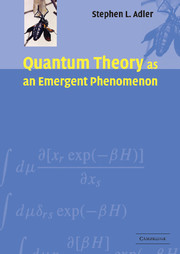
Quantum Theory as an Emergent Phenomenon
- The Statistical Mechanics of Matrix Models as the Precursor of Quantum Field Theory
-
- Published online:
- 17 March 2010
- Print publication:
- 26 August 2004
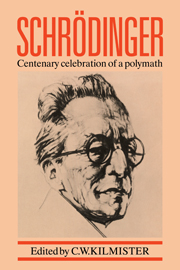
Schrödinger
- Centenary Celebration of a Polymath
-
- Published online:
- 19 January 2010
- Print publication:
- 02 April 1987
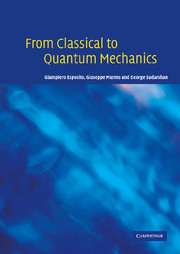
From Classical to Quantum Mechanics
- An Introduction to the Formalism, Foundations and Applications
-
- Published online:
- 14 January 2010
- Print publication:
- 11 March 2004
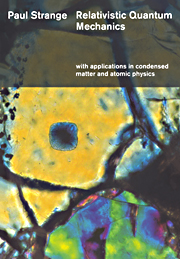
Relativistic Quantum Mechanics
- With Applications in Condensed Matter and Atomic Physics
-
- Published online:
- 11 January 2010
- Print publication:
- 17 September 1998
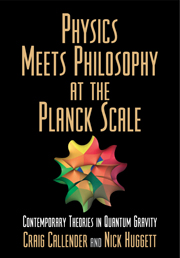
Physics Meets Philosophy at the Planck Scale
- Contemporary Theories in Quantum Gravity
-
- Published online:
- 15 December 2009
- Print publication:
- 29 January 2001
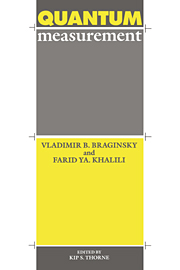
Quantum Measurement
-
- Published online:
- 15 December 2009
- Print publication:
- 24 September 1992
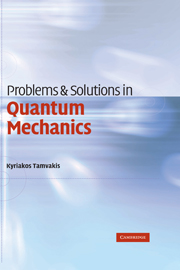
Problems and Solutions in Quantum Mechanics
-
- Published online:
- 15 December 2009
- Print publication:
- 11 August 2005
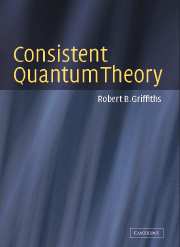
Consistent Quantum Theory
-
- Published online:
- 10 December 2009
- Print publication:
- 29 November 2001
